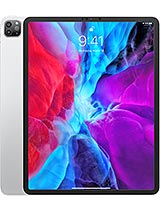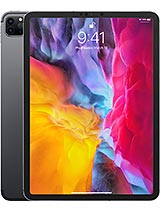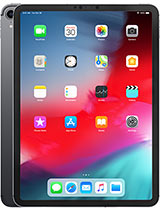iPad Pro: Magic Keyboard VS Brydge Pro+! By AppleInsider
Thank you. Thank you, everyone for hanging out today. It is Andrew here from Apple Insider, and we're going to be comparing the brand new just released magic keyboard against the bridge, Pro Plus, a keyboard that we've already reviewed both of these guys exclusive to the 2018 and 2020 I've had pros. There is a lot that sets these two apart. So let's go ahead and just dive right into it, starting off with the magic keyboard. The magic keyboard is a big deal for iPad Pro users, because Apple's other keyboard option.
The smart, Keyboard folio is just really not up to the task. This two connects over the smart connector, which are those three pins on the back of the iPad. Then the iPad Pro will magnetically connect to the rear of the magic keyboard. It is dead, simple to connect on there, just bring it up and boom. It connects close it up, use it.
Those magnets are nice and strong. Here, I've had won't be going anywhere. A unique feature of the magic keyboard is that the iPad itself essentially hovers above the keyboard. Brings it a little closer to your eyeballs and gives it a really nice? Look. It also centers the balance and moves it forward a little instead of being more towards the back like it is with the bridge.
A bonus, USB-C port is hidden on the hinge of the magic keyboard perfect for charging and freeing up the other one for accessories or just keeping things clean. Now we are huge fans of the trackpad on the magic keyboard. It feels phenomenal to move around. You can easily use gestures, such as multi finger, swipes, left and right to jump between apps moving forward to go home or moving forward and holding to open up the app switcher. It feels great it's a little small and cramped compared to a larger Magic Trackpad on your Mac, but overall it still has the same quality.
In fact, you can press it anywhere. It's not haptic feedback like we have on the magic track, boards and Macs, but you can actually press anywhere on there, instead of just being stuck to the front like you are with bridge before we talk about, though, let's talk about our sponsor for this video paper like when we got our iPad Pro's paper leak was one of the first things that we put on their paper. Like is essentially a really nice screen protector. It goes on easily, and it gives you a matte finish to your iPad's display, which may it really easy on the eyes, reduces glare and is perfect for reading or using Apple Pencil. The installation process is so easy to do.
They include everything in the box. It takes you a few minutes to go around clean the screen and squeegee all the little bubbles out. Then you're ready to go, go ahead and draw read whatever it is that you do on your iPad with a nice matte finish even better, it doesn't collect fingerprints nearly as much as the glossy display does. So if you read draw sketch, take note or anything else with your iPad consider picking up paper like if you want to grab one for yourself, you can find out more at the link down below in the description now about that Bridge trackpad. There's a big difference between this and apples.
Whereas apples, you can click anywhere. Bridge is using a springboard design, which means the back of the trackpad is fixed and the rest of it kind of moves in a springboard fashion. So you can press down and click anywhere on the trackpad, except for that upper edge. Now the bridge does connect over Bluetooth rather than a smart connector, which does mean it needs to be charged in. There is a little of lag.
We have even seen some hiccups within iOS or iPadOS. We're kind of just gets really excited and Scrolls away past. What we are trying to do see just towards the top of display just kind of kept going. So there are those small hiccups. The trackpad experience on Bridge well good is nowhere near what it is on the magic keyboard after using the bridge for the past several weeks and then switching to the magic keyboard of this week.
It is a night and day difference how much smoother faster and more responsive. It is that's what happens when you pick an apple design, product versus a third party product, especially Bridge, which was essentially based off of an accessibility feature before it came in a full feature in iPadOS 13.4, looking at the keyboards Bridge has a lot of going for it, though there is a dedicated Siri key in that lower left-hand corner and a full row of function keys towards the top there brightness controls. There are keyboard controls. You can adjust the brightness of the keyboard itself. Media controls, volume controls.
It is very easy to control everything through those function, keys, reducing your need to move up to the screen or use the trackpad to get to those features within setting or control center. We do like typing on the bridge. The keys feel good there's a good amount of key travel, perhaps a little more key travel than there is on the magic keyboard, but there is a little of wobble to them. Then you're as sturdy as apples are on the magic keyboard. Both of these keyboards are backlit, and it is very easy to control the bridge just from that little light bulb icon on the keyboard.
Here you can see going through the different levels of brightness very easy to cycle through quick and easy to get to. So, if you're watching move, you can just go ahead and turn that off. If you don't want to have those lights on, there is a good amount of light, bleed those who you're. Looking at an angle, you really notice how much light is peeking around those keys versus the magic keyboard here, which is very tight, and there is almost no light leak at all moving around the actual chicle keys. Now the downside is, you do have to go into settings into this hardboard keyboard hardware keyboard menu to adjust the brightness of the keyboard itself, so there is an ambient light sensor.
It just automatically, but if you have to manually, do it if you want to turn it off for watching a movie, you do have to jump into those settings to be able to control it. We just kind of pain, czars typing on the magic keyboard it is it buries. It is a great feeling keyboard a good amount of key travel, very solid keys, though not quite as solid as they are on, like the 16-inch MacBook Pro, there is a small amount of key wiggle between the sides, but overall, a very, very, very good keyboard, and that we are happy and loved to use this every single day. A big difference again between the two is going to be the hinge design. So here is Apple's hinge on the magic keyboard you can see.
It has two different bends to it. There's the hinge at the bottom, then. The second hinge there in the middle, which is what gives it that floating hovering effect and is shifting that weight a little more towards the middle of the keyboard itself. But it is a little limiting. You can't move it all that much back, whereas the bridge can go completely 180 degrees.
It can go completely flat if you show it so choose where's the magic keyboard it's limited at about a hundred and twenty-five degrees. Bridge is able to achieve that thanks to their custom. Proprietary hinges. They grip the iPads ever so gently on either side on both corners. It kind of shifts up a little to give a little of a boost when it's sitting down on a table that there are grips on the bottom, and it holds on very secure, but it's still really easy to take your iPad out when you are done using it, or you just want to use it as a tablet.
They look great, and they hold on very well, and it kind of game reduces the size just a little because it doesn't cover the entire back edge of the iPad, like it does on the smart, Keyboard folio now, I know something that you're maybe thinking right now, which is protection between these two devices. Both are going to offer similar degrees of protection, but it has a little of a catch, so the magic keyboard, as you can see, covers everything covers the front and the back in one of your iPad and when you're holding them side by side they're very similar, but the bridge has an optional back cover, so with an optional back cover, the bridge is a little thicker, it's lighter, but a little thicker, but that back cover can come off at that point, that bridge becomes just a little shorter or slimmer. Then the magic keyboard is so. It depends on what you want. It'll be a tiny bit thicker.
If you have that full back protection, but then you don't have it's not as thin as it would be. Otherwise, so it's a good option, because you have a choice between a little thicker device or more protective device. Both of these keyboards are amazing, but honestly it's really hard to compete with Apple at its own game. The magic keyboard is phenomenal in pretty much every way. Bridge wins out in a few ways, such as that extra battery life and function keys and all that, but it also comes in at a cheaper price, regardless of which one you prefer.
You can grab one down below in the description, and I'd love to know what you guys think reach me over on Twitter at Andrew underscore OSU, hey everyone. Did you guys, like that video be sure to click on that like button, so we can create content that we know that you guys want to see and follow Apple Insider on all social media channels? If you want the best prices on any Apple gear check out the Apple Insider price guide that is updated daily and until next time we'll see you later.
Source : AppleInsider



























